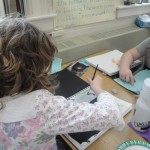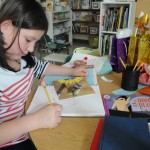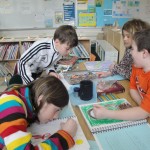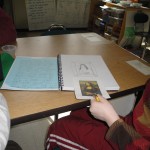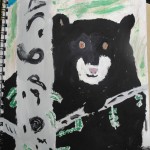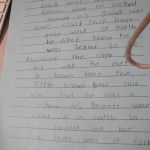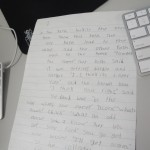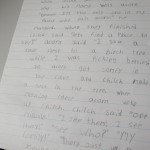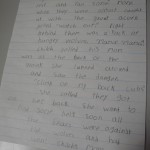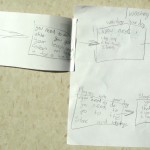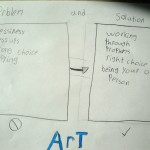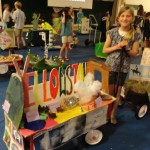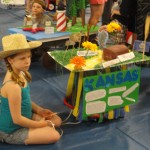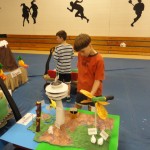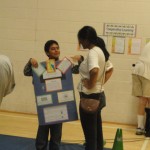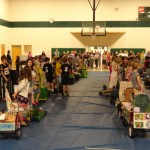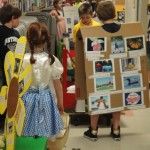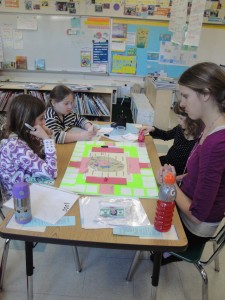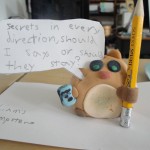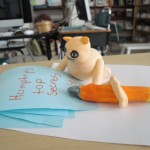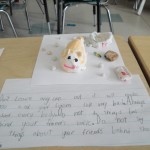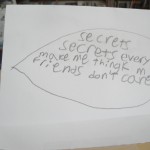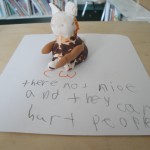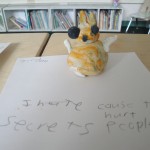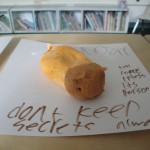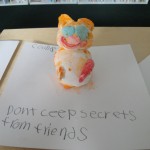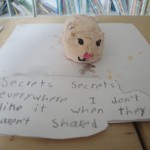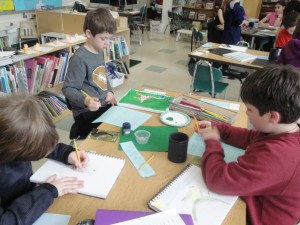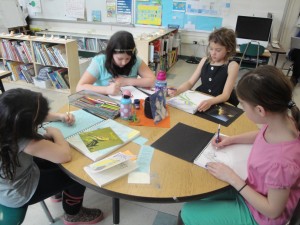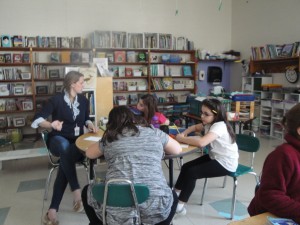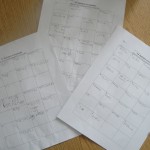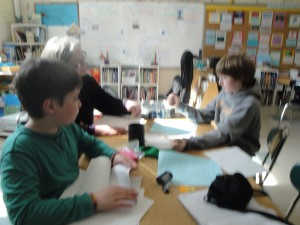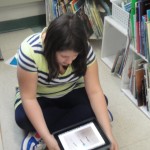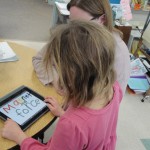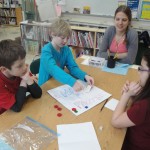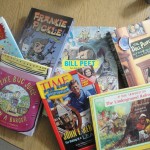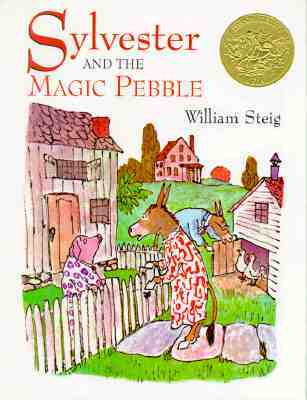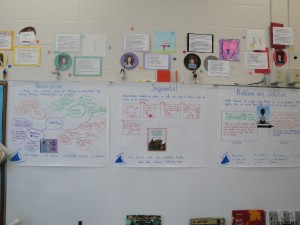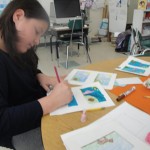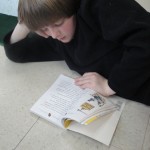The end of the week comes so fast and with each week I worry about whether we’ve done enough. But then I go through the pictures the class photographers have taken and I think about the work in the student folders ready to go home and I am pleasantly surprised. We have accomplished quite a bit of reading, writing, social studies, and math. We have shared our thinking and ideas through artwork and plans, sketches and problem solving.
Artist-Writers’ Workshop
The children have begun to enjoy our time with artist-writers’ workshop. A time where we combine art and writing. Some of the children spend more time with the art and some with the writing. A few spend lots of time with both. We seem to have moved into a thoughtful routine where the children are thinking about their learning and problem solving. At first it was difficult for the children to respond to the reflection prompt, “If I did this picture over again, I would…” Now they are beginning to consider how their image might change with a different medium or if they changed the color scheme completely.
One of the main goals of this process is developing habit of mindfulness and we can see and hear that growing. We have finally settled on Tuesday and Friday as they days for this workshop and now that the children can count on those times they are planning for them. Our last two sessions have been very quiet and peaceful. The children have been surprised that what they have been working on and working through in their art can be seen so differently by others. We tend to be very self-critical so when classmates have complimented them on great work it has been a nice surprise – those kind words change a person’s perspective.
Our Alphabet of Gratitude
Last week each student generated a personal alphabet of gratitude. Some of the children worked alone and others worked in table groups. Some letters had large collections while others had few. We listed families and friends, love and life, hope and help, medicine and meals. We resorted to yo-yos and zebras for letters that were a real stretch for us. Once our personal collections had been made, we created a class collection. The main principle was if you suggested something for the class alphabet you had to think that at least 2 others would agree. The example was instead of saying, “I am grateful for Beth.” I would need to say, “I am grateful for sisters.” Clash of Clans was the only thing that was contested on the list, but everyone had to concede that it met our criteria.
This week each child randomly drew out two different letters and worked to illustrate the gratitudes that matched with them. When the illustrations are all done we will share them in the hall by turning them into a paper quilt. Upon completion of the quilt, we’ll begin the tradition of keeping track of the things – both large and small – that bring us happiness each day. Smiles, sunshine, opera hugs, laughter and caring friends will top my list. I wonder what the children will notice. I wonder if they will feel their own happiness grow.
Informational Writing
We are beginning our second drafts. Once all of the children completed their first drafts and experimented with a variety of different leads the class reviewed the five different organizational format we have explore of informational writing. Each writer had to recognize what format they had used for their first draft and then select a different format for their second. Once the new formant was selected, the children worked to create a graphic representation planning out the main ideas they would present in their writing and the supporting details they would like to include. Most of the children were eager to give this a try. Some of them were even playfully thinking of voice and audience and how they might create a character to present the information. It is pretty exciting to see how willing the class was to take this challenge on. The following pictures show some of the ways the children planned to share their writing in a different format.
Our third and final draft will be a combination of the first two drafts with feedback from classmates and teacher. These will be illustrated and published in a class magazine. We are excited about the idea of a publication – we can’t wait to share it with you at home.
Launching the State Project
We have begun our study of the United States. We are excited about this project because it combines so many different areas and it is fun! We do, as always – but a little more – need you help at home. In mid-April (if all goes as planned) we’ll be sending home the guidelines for how you and your child can create a “float” for the Parade of the States. Hopefully by this point you all have heard about the state your child is researching. After a few fits and starts it seems as though our class is pretty excited about the state they have and are eager to be learning as much as they can. The children will be learning about their states and identifying that state’s ” seven wonders.” These wonders will be represented on a “float” to be presented in the Parade of the States. It is our plan that the children will have researched and identified their seven wonders by April 18. Mrs. Haight has been collaborating with us all year and has planned several of her units of study to coincide with this project. In school the children will be creating a paper-mache model of an animal, a man-made structure and a representation of person important in their state. These will represent three of the wonders. The children will combine this work with your help at home to build an float for the parade.
We will send home clear guidelines when the time comes. A couple of the children talked about beginning the building process new. Please don’t do that yet. We have learned from past parades that we should slow the process down and we think we have built in enough time so that learning AND building go together.
Here are a few photograph examples to get you thinking.
Bits and Pieces –
- Viviane has not joined us yet. We are hoping to meet her next week.
- Mr. Caron has rescheduled our next challenge to Tuesday, April 1 at 9:45. Hopefully we’ll be outside, but because it will be earlier in the day than our typical time please be sure children are prepared for cold. The nature trail at that point in the day will not have warmed up.
- Two eighth graders, Sky and Matt are joining us each Monday and Wednesday to help us with book clubs. We are looking forward to reading and discussing great books with them.
- We are beginning to explore division and fractions. These new topics are being introduced and we are still working in math to master basic facts in addition, subtraction and multiplication. Any and all help that you can offer at home is greatly appreciated. We just do not have time in the school day to support the memorization required by standards.
